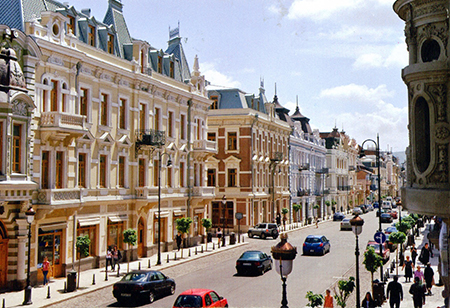Georgia’s GDP maintains sustainable growth

Georgia’s market economy is continuing to maintain sustainable growth, reveals the National Statistics Office of Georgia.
Latest Geostat data concluded the country’s economy grew almost five percent last year – a positive sustainable trend compared to earlier data.
Figures released today revealed the country experienced a 4.8 percent growth in GDP (Gross Domestic Product) in 2014, while the GDP deflator increased by 3.8 percent compared to the previous year, claimed Geostat.

Looking ahead, Georgia’s economy was estimated to grow by 3.5 percent in 2015, reported global rating agency Moody's. The agency’s latest report saw Georgia retain its stable outlook on its sovereign rating, at ‘BB-’, and retain its ‘positive’ outlook.
Geostat noted in 2014, Georgia’s GDP at current prices totalled 29.187 billion GEL – up 8.7 percent compared to 2013.
The statistics agency noted the largest share in the sectoral structure of GDP was held by trade services (17.4 percent) and industry (17.1 percent), followed by transport and communication services (10.5 percent), public administration (9.9 percent), agriculture, forestry and fishing (9.2 percent), construction (7.3 percent) and real estate, renting and business activities (6 percent).
Real growth was experienced in a number of sectors, including construction (13.5 percent), financial intermediation (10.0percent), real estate, renting and business activities (8.5 percent), communication (7.1percent), transport (6.4 percent), and trade (6.1 percent).
A decrease in growth was experienced in a couple of the country’s economic activities, mainly in electricity, gas and water supply (-2.8 percent), Geostat reported.
As well as releasing complete 2014 GDP data, today Geostat also published Georgia’s GDP data for Q4 (fourth quarter) of 2014, which revealed GDP amounted to 1.8 percent year-on-year, while the GDP deflator increased by 4.4 percent. The nominal GDP totalled 8.176 billion GEL.
In Q4, the largest share of GDP in terms of economic activity were held by trade (17.8 percent), services and industry (16.6 percent), followed by public administration (11.7 percent), transport and communication services (9.5 percent), agriculture, hunting and forestry, fishing (8.2 percent) and construction (8 percent).
Real growth was registered in the real estate, renting and business activities sector (13.7 percent), mining and quarrying (11.4 percent), communication (10 percent), financial intermediation (8.7percent), hotels and restaurants (6.5 percent), education (3.9 percent), and construction (3.1 percent).
A decrease in growth was experienced in the country’s manufacturing sector (-6.9 percent), electricity, gas and water supply (-6 percent) and community, social and personal service activities (-3.7 percent), concluded Geostat.
 Tweet
Tweet  Share
Share